Just north of the Turkish-Syrian border lie the stunning remains of Dara-Anastasiupolis. Once a thriving garrison town, constructed to guard the Byzantine east from Persian attacks, her crumbling ruins now rest derelict and dusted, telling the fascinating story of a city born from conflict.
Then as now, Dara lies in borderland.
And yet, one and a half millennia have produced a vastly different picture. Whereas Dara-Anastasiupolis was at the forefront of Byzantine politics, today, the city lies forgotten, only visited by a handful few finding themselves in this barren corner of south-eastern Turkey.
A small settlement had existed since the times of Achaemenid ruler Darius III (380-330 BCE) but it wasn’t until the dawn of the 6th century CE that Dara as we know it came to be. Seemingly overnight the woes of warfare returned and crept back into the conscience of the oblivious public.
Six decades of peace had left the empire’s eastern periphery ill-defended, and even though a favourable armistice guaranteed the status quo in 506, the conflict had revealed the blatant insufficiencies of the Roman army, plagued by severe supply shortages along the Persian frontier. Thus, to bolster military presence in the borderlands and avoid future complicacies, Emperor Anastasios I commanded the construction of a garrison town and soon royal banners flew proudly from the battlements of Anastasiupolis.
Profiting from her strategic prevalence at the war-torn fringes of the Byzantine world, Anastasiupolis prospered on the premise of conflict, and, fuelled by generous subsidies flowing from the imperial coffers, the city became the main command centre and supply hub for the empire’s legions in the region; Constantinople’s sturdy shield against Sassanian aggression.
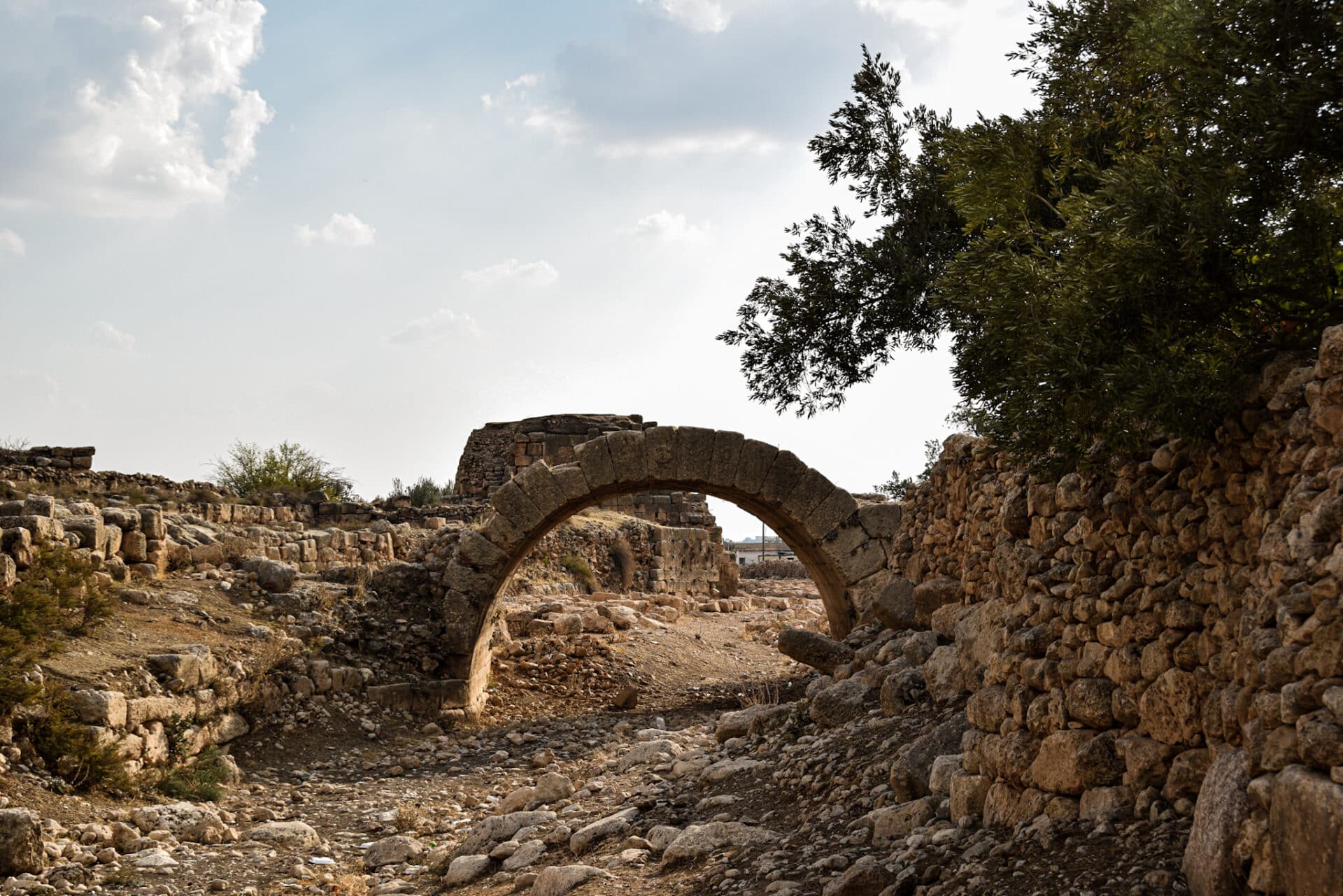
Her golden years were short-lived, however, and shifting circumstances in regional power relations (mainly the Arab conquests of the 7th century) meant that Dara-Anastasiupolis, deprived of her military importance, slowly drifted into obscurity degraded to an insignificant existence in the dusty reaches of northern Mesopotamia.
Once a brilliant testament to the might of Byzantium, her ravaged remains now lie abandoned in the blistering heat, a hollow echo of their former glory. Where roofs have crumbled and ramparts fallen, olive groves sprout and countryside dwellings grace the ancient ruins.
Nevertheless, those who walk among these broken vestiges may still find fleeting glimpses of her faded greatness, an intriguing tale of a city that, albeit only for a brief moment, had been a shining beacon at the very edge of the Roman cosmos before the clutches of time caught up with her.
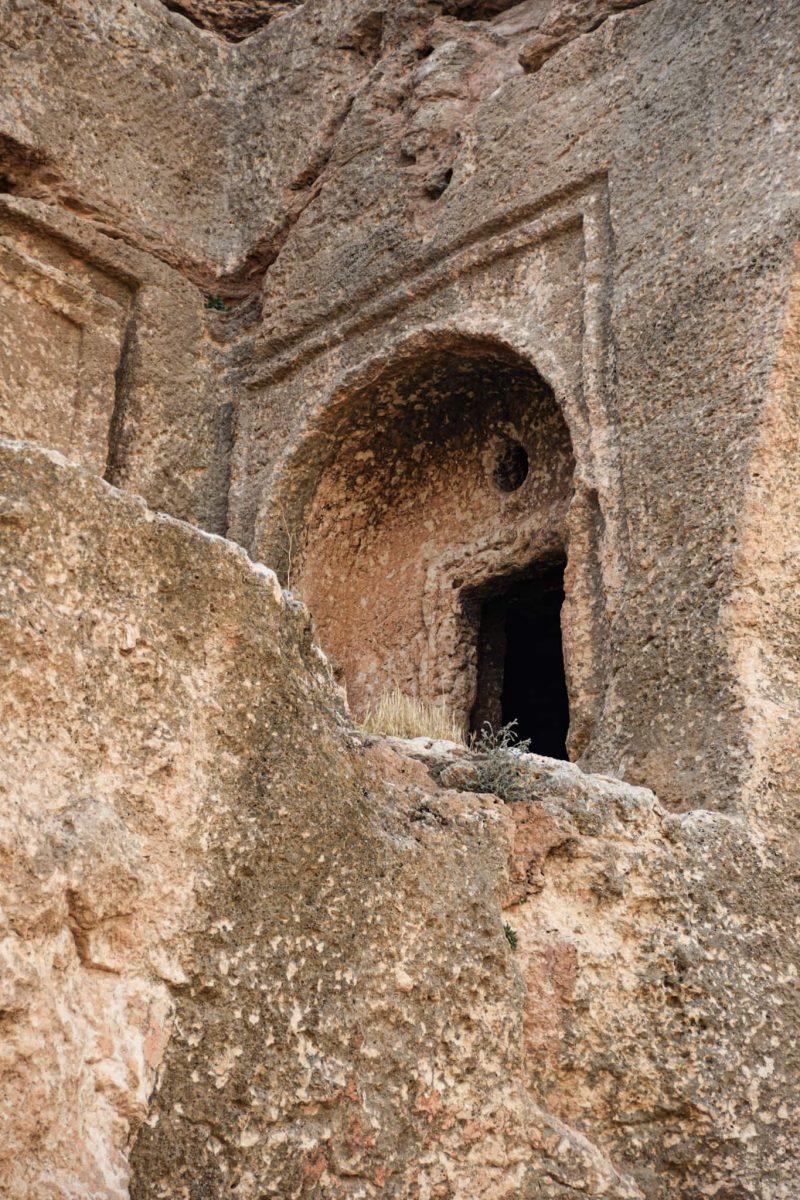
DISCOVER DARA-ANASTASIUPOLIS
Opening hours | Winter 8:00-12:00 | 13:00-17:00 | Summer 8:30-12:00 | 13:00-18:30 | closed on Mondays
Entrance fee | free of charge
EXPLORING ANCIENT DARA
Getting around Dara is really intuitive as brown signs will point you towards the different sights in the area. I would calculate roughly two hours for a thorough visit, including the necropolis, cisterns, remains of the agora and city walls, as well as excursions to the Castellum Aqua and the Islamic tomb overlooking the village.
While parts of the complex can be explored at any point during the day, the necropolis and cisterns do have specific opening times (see above) and are closed on Mondays.
Visiting the archaeological site is completely free.
THE NECROPOLIS
Upon arriving in Dara, the first thing you will spot are the old quarries. Reminiscent of gashing wounds cut into the westward hills, nowadays, they constitute Anastasiupolis’ most striking element.
To manifest Anastasios’ vision of a steadfast border garrison, the land was heavily exploited for its natural resources before the stone pits were ultimately repurposed as graveyards for the town’s growing population.
Although Christianity had already established itself as the predominant faith in northern Mesopotamia, Pagan beliefs were still deeply rooted in the minds of the people. In honour of the god Mithras believed to have been born from a rock, the deceased were henceforth buried in rock-hewn burial chambers or simple cist tombs scattered around the necropolis.
Most likely built to commemorate those perished in the Sassanian invasion of 573 CE, the largest structure remaining is a huge three-storey chamber boasting a beautifully ornamented entrance depicting Christian as well as floral motifs chiselled directly into the smooth surface of the rock.
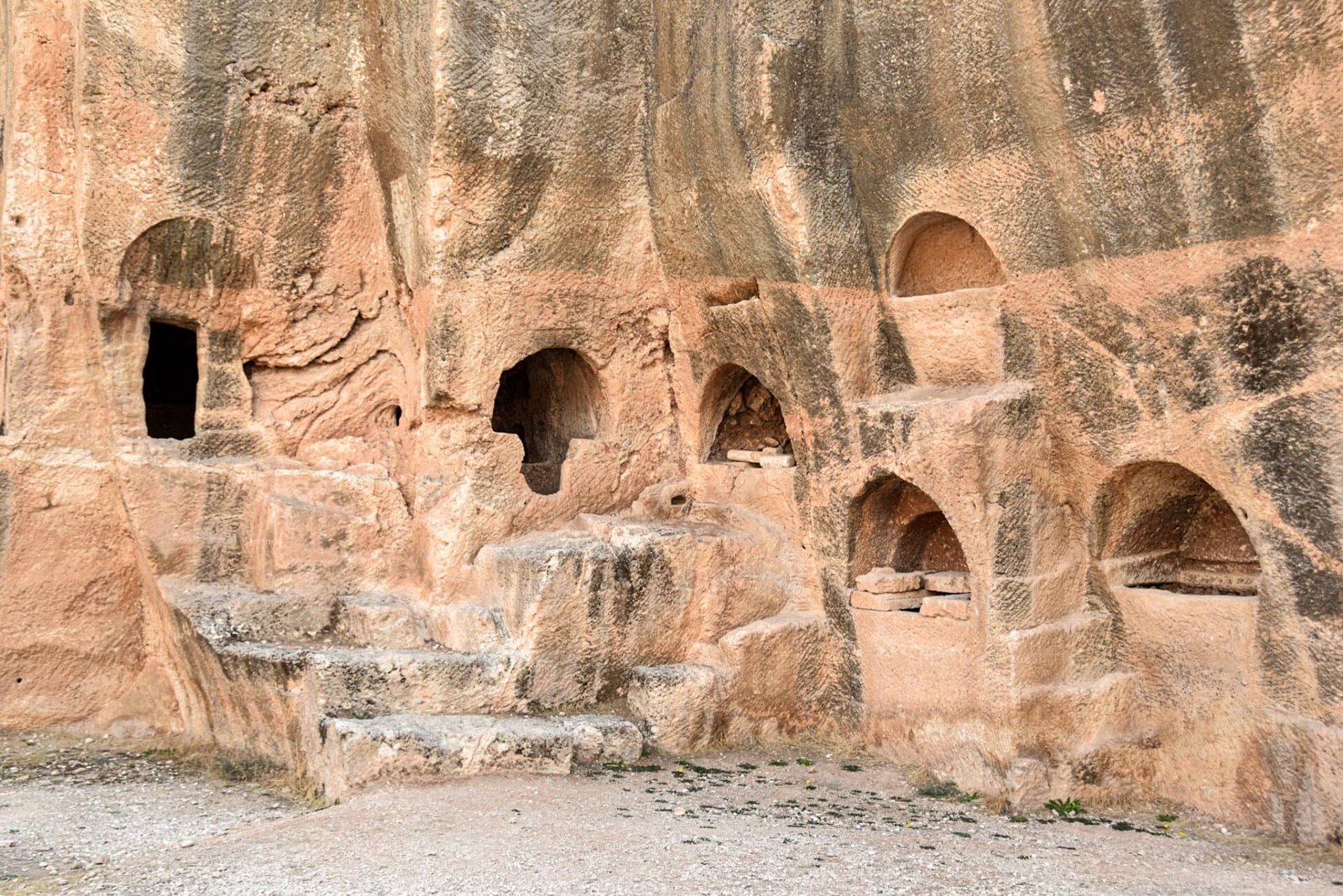
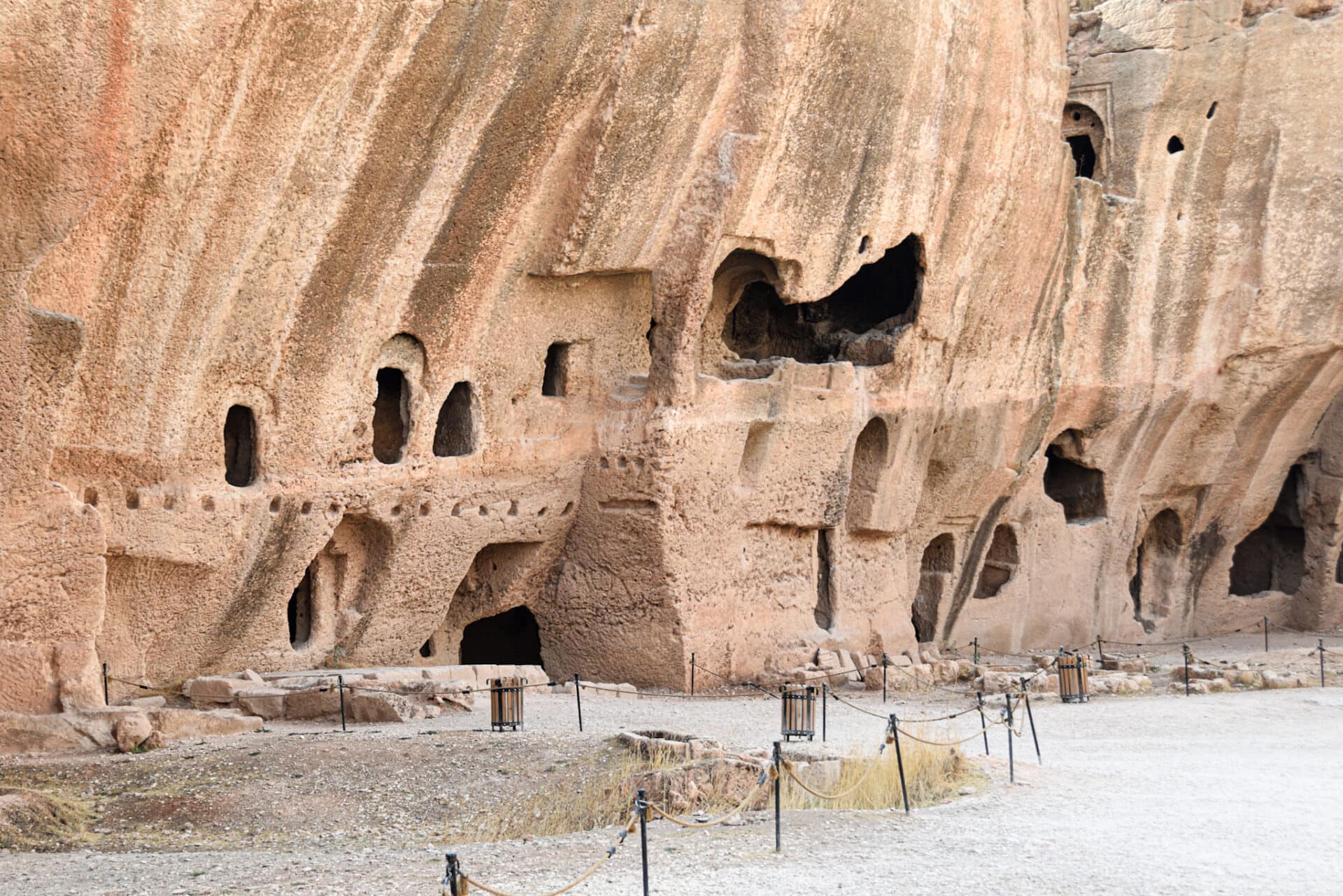

AGORA AND CITY WALLS
Head over to the south end of the village to find the crumbling remnants of the ancient agora.
Once the thriving centre of Dara-Anastasiupolis, her ruins now rest in the pleasant shade of olive groves and the ruinous remains of her former battlements.
Already impressive during Anastasios’ reign, the city walls were built in haste though and soon proved greatly deficient, forcing Emperor Justinian I to undertake extensive renovations merely two decades later that saw them being raised to an astonishing height of 20 metres! (as comparison: the Theodosian Walls in Istanbul “only” measure about 12 metres in height). Even though few remains of these grand ramparts, one can still surmise their previous dimensions towering high above the arid plains.
A wooden boardwalk leads towards the agora but ends relatively soon, letting you roam the site freely.
THE CISTERNS
Some of Dara’s greatest architectonic treasures are hidden underground.
Constructed to secure the city’s water supply during times of siege, huge cisterns were erected beneath her cobbled streets to ensure her citizens could resist Sassanian attacks for extended periods without relying on outside support.
Two of these monumental structures, the Western Cistern, located just east of the necropolis, and Church Cistern, situated underneath Dara’s former cathedral, have been excavated and are now open to visitors eager to explore their depths. Virtually untouched, the cisterns are a remarkable testament of Roman ingenuity and shouldn’t be missed when visiting this former garrison.
In addition, the decaying ruins of the Castellum Aqua, a massive water collection and distribution centre with a capacity of no less than 4.500 cubic metres, can be witnessed just south of the ancient acropolis.
In the early 20th century, the cisterns gained unwanted notoriety when reports emerged that they had been used as mass graves by Ottoman forces during the horrors of the Armenian Genocide.
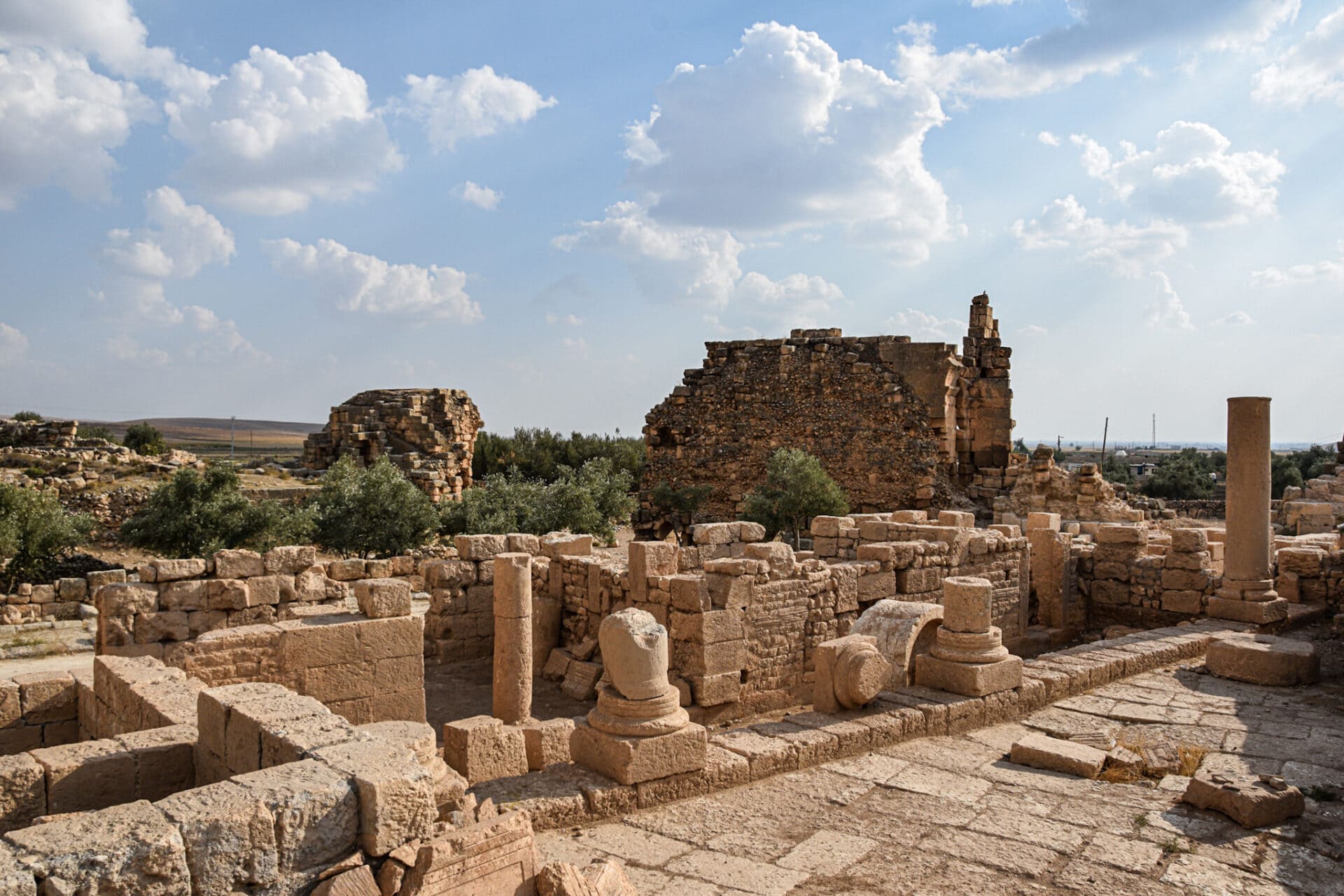
HOW TO GET TO DARA FROM MARDIN
Located merely 35 kilometres south of Mardin, the archaeological site of Dara-Anastasiupolis perfectly lends itself for a half-day trip.
Public buses (look out for brown buses similar to the ordinary yellow buses driving around the city) run three times a day from Mardin’s main bus station (Mardin Şehirler Arası Otogar) to Dara. You can either catch them directly at the bus station or anywhere on the D955 leading south towards the E90 highway. Alternatively, you might also catch a dolmuş/minibus going there.
The ride takes roughly 30 minutes and costs 20 TL (November 2022).
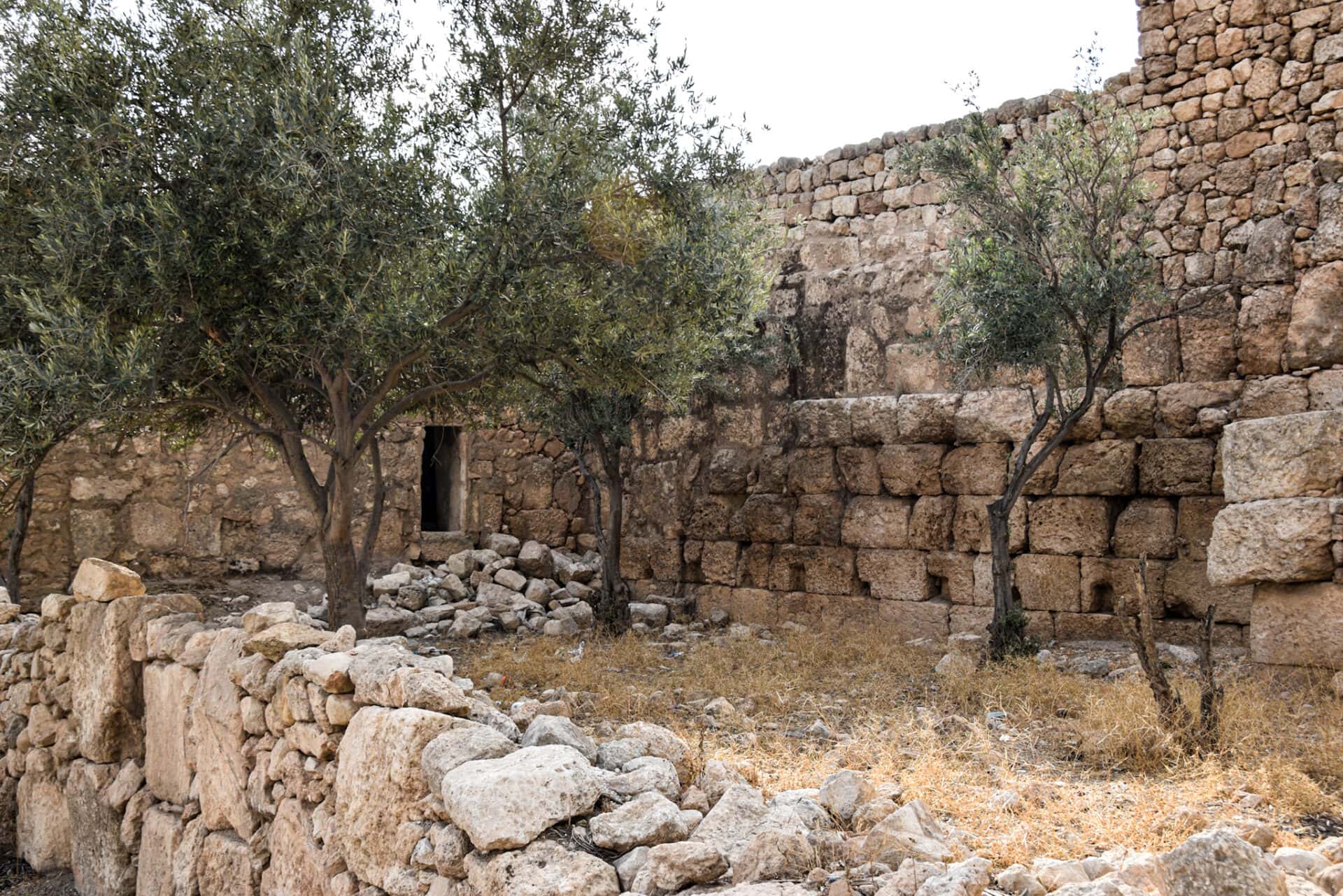
WHERE TO NEXT?
For more content consider following me on Instagram.
Intrigued by crumbling ruins and ancient places? Check out these other vestiges of the past:
ANI | THE “CITY OF 1001 CHURCHES”
